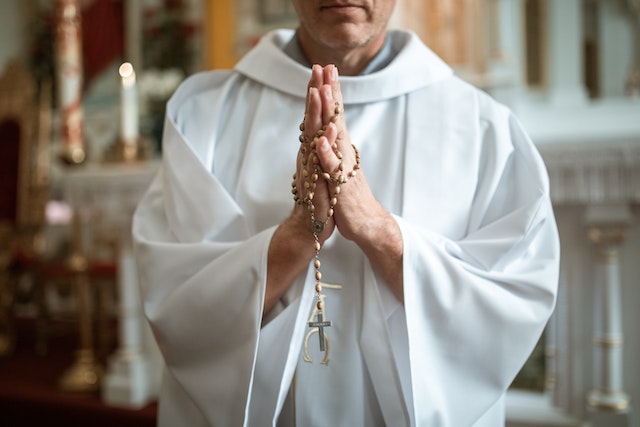
How is Easter calculated? Easter is the first Sunday after the full Moon that occurs on or after the spring equinox.
When to celebrate Easter is a problem that has taxed the church for centuries. The date of Easter is very important for the Christian church because the whole religion revolves around the birth and death of Jesus Christ. Jesus’s death and resurrection are vital tenets of the religion. His birth ended up on December 25th (although it was January 6th for a while) and that is easy enough to remember. However, Easter was more difficult to allocate and not knowing exactly when to celebrate the crucifixion and rebirth of Jesus could diminish the church’s reputation of infallibility.
So, why was it so difficult to know when Easter was? In the Bible, Jesus was arrested during the festival of Passover. Passover is a Jewish religious holiday that celebrates Moses and the Israelites escaping from slavery in Egypt. God sent 10 plagues upon the Egyptians and the last one was the death of all the firstborn. The Israelites were commanded to paint a mark on their doors with lamb’s blood and the Angel of Death passed over their houses, leaving their firstborn unharmed. Jesus and his disciples were eating a meal to celebrate Passover when he was arrested, and this is known as the last supper. From here, his trial and execution is chronicled in the Bible, so it is possible for the church to calculate the dates if they know when Passover is. Jesus was crucified on the last day of Passover, so Easter has to be three days after Passover. So, why isn’t Easter on a set date in the same way that Christmas is? Christmas is set on December 25th in the Gregorian calendar. Passover is based on the Jewish calendar, which is a lunisolar calendar.
Early civilizations had lunar calendars and solar calendars. A lunar calendar works on cycles of the moon and a solar calendar works on how long it takes the Earth to orbit the sun. The problem with a lunar calendar is that the moon goes round the Earth once every 29 days, meaning a lunar year is 354 days long. If you only use a lunar calendar, your months slowly go out of sync with the seasons. A solar calendar follows the sun but is out of sync by a quarter of a day a year. You can fix a solar calendar by having an extra day every four years. It is more difficult to fix a lunar calendar. One solution is to have a lunisolar calendar. What that means is, the lunar calendar is squeezed into the solar calendar. To make this work, it is necessary to have an extra month every few years. Most years have twelve months, but there are thirteen months in a year every few years.
Many Christian festivals were attached to the lunar calendar. That was fine, back when the Bible was written, but it became more difficult with the Gregorian calendar that most of the world uses today. That meant it was necessary to work out a way to calculate when Easter should be.
In the early days of Christianity, Passover was celebrated on the first full moon after the vernal equinox. This meant that Easter should be three days after that, but no one was 100% sure exactly where and people started celebrating Easter on different days. They had to follow the Jewish calendar to find where it should be and some years, that could be a whole month out. This wasn’t good for the church, so they decided to do something about it. In 325, the Roman Emperor Constantine I convened a council of Christian bishops to try to work out when Easter should be. They didn’t come up with a calculation, but they did separate the Christian Easter from the Jewish calendar. Every year, the pope would announce when Easter was to be. This worked fine for a while, but towards the end of the Roman Empire, it became more difficult to get the message out and people started celebrating Easter on different days again.
Over the next few centuries, different groups tried to work out a way of calculating Easter. They came up with tables, and formula, but these would always end up being out of sync because of the problems with the calendars. People in different countries tended to use different tables and Easter was celebrated at different times. By 725, Easter had been defined as the Sunday following the full Moon which falls on or after the vernal equinox. That didn’t solve all of the problems though because the unreliability of the calendar was still a problem that needed to be fixed and the vernal equinox can be anywhere from March 19th to March 22nd. The Julian calendar had been a good attempt, but it miscalculated the length of the year and Easter was gradually moving away from the spring equinox.
To sort out the problem of Easter once and for all, in 1582, Pope Gregory XIII introduced the calendar that would bear his name. It was invented by an Italian doctor called Aloysius Lilius and it fixed all of the problems with the previous calendars. The calendar wasn’t popular, and it took 200 years before it was accepted in England and its colonies, but it enabled all the countries that used it to keep a track of the date, to know exactly when the vernal equinox is (the church fixed it on March 21st), and to thusly be able to calculate Easter. All countries could celebrate Easter on the same day. And this is what I learned today.
Sources
https://www.rmg.co.uk/stories/topics/when-easter
https://en.wikipedia.org/wiki/Easter_controversy
https://www.countryliving.com/life/a46407/why-does-easter-change-dates/
https://en.wikipedia.org/wiki/Easter
https://www.timeanddate.com/calendar/determining-easter-date.html
https://www.science.org.au/curious/everything-else/calendars
https://www.timeanddate.com/calendar/gregorian-calendar.html
https://www.history.com/news/6-things-you-may-not-know-about-the-gregorian-calendar

Pingback: When did April Fools' Day start? - I Learned This Today